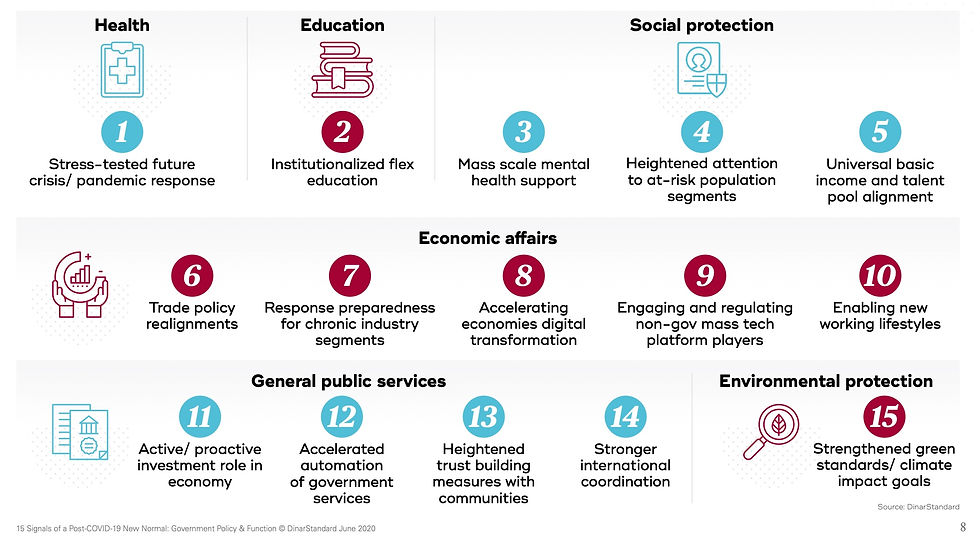This Insights Brief addresses a key strategic question, “What will the post-COVID-19 ‘new normal’ look like for governments?”; and identifies 15 new government policy and reform areas in health, education, social protection, economic affairs, general public services, and environmental protection.
The 15 Signals of a Post-COVID-19 ‘New Normal’ for Governments identified are based on an analysis of the current unprecedented global impact on citizens, industry, and government services. With a 7% drop in IMF’s global GDP growth projections (Oct 2019 versus April 2020), the world is experiencing its sharpest economic contraction since the Great Depression in the 1930s. The public is facing job losses equivalent to 305 million full-time jobs just in the second quarter of 2020 as per ILO, with an estimated additional 580 million additional people moving into poverty in 2020 (UN working paper). Exasperating the health crisis is also the social equity that has further regressed.

Touching ‘health’, the key identified area to address was a government-wide crisis management platform that is stress-tested and capable of being most effective in future pandemic-like situations. In the area of “education”, the institutionalized flex model of education has been identified as the key signal of future response that should cover flex licensing for schools and universities; blended learning, digitally enabled remote/ offline systems as well as new job placement standards.



Comments